How Wisconsin Lost Control of the Strange Disease Killing Its Deer
Despite early containment efforts, chronic wasting disease has been allowed to run rampant in the state. That’s bad news for all of us.
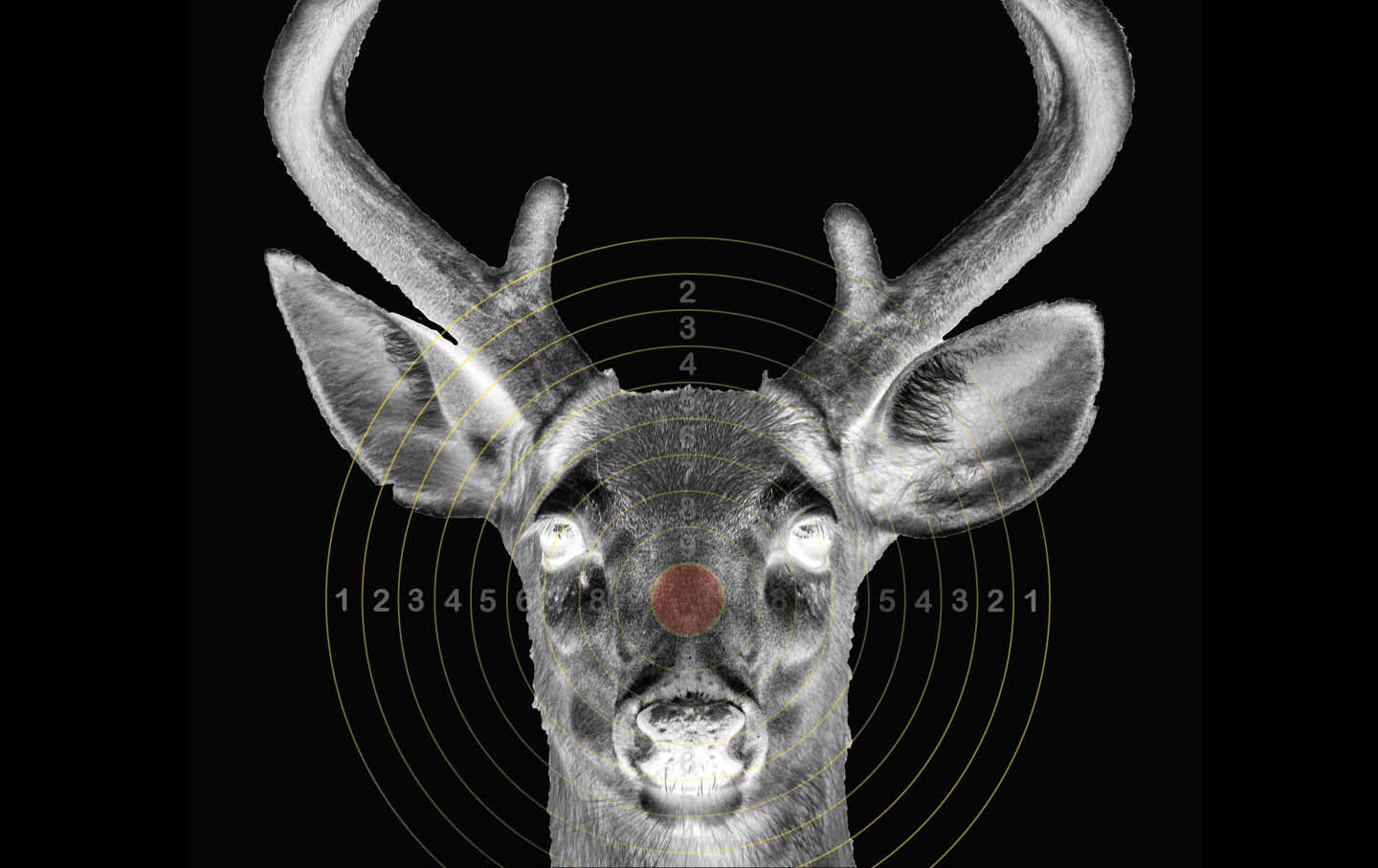
The 3-year-old buck bent down to sip from a small pond on a late November afternoon in Iowa County, Wisconsin. It was nearing the end of the annual rut, and the animal was likely mad with lust for a mate. Alas, he had swaggered into the wrong watering hole. There was a loud blast. In an instant, a bullet tore through the tissue of the buck’s long neck. He collapsed bleeding on the bank.
As the deer lay dying, a man emerged from a camouflaged structure on the far side of the pond. His name was Mike Foy, a 67-year-old hunter and former official with the Wisconsin Department of Natural Resources, who had spent many cold mornings and long afternoons waiting for the deer that would fill his family’s freezer for the year. Twenty-five years ago, the story would have ended here: Foy would process the deer and take it home, no worries weighing on his mind. But those times are past. There is a sickness stalking these lands. The deer carry it in their brains, their saliva, their bowels, their blood. Foy would never feed such a deer to his family, but in a county in which as much as 60 percent of the male deer are sick with the disease, finding a healthy one is not a simple task.
Every hunter in Wisconsin, and in many other states, knows the name of this illness: chronic wasting disease. It is a strange affliction. Highly contagious and 100 percent fatal to the cervids that contract it, CWD is not caused by living organisms such as bacteria or parasites, nor by a virus. Instead, it is caused by misfolded proteins called prions that, once they infect an animal, build up in the brain and body, scrambling the nervous system and leading to tremors, disorientation, listlessness, weight loss, and death. (Some have taken to calling it “zombie deer disease.”)
Like other prion diseases—including scrapie in sheep, mad cow disease in cattle, and Creutzfeldt-Jakob disease in humans—CWD is part of a family of illnesses known as transmissible spongiform encephalopathies. Though there are several leading theories as to CWD’s origin, no one really knows exactly how it emerged—or even how it is transmitted and precisely how it kills. There are no vaccines and no treatments. And though it is considered unlikely that CWD could jump to humans, as mad cow disease once did in such spectacular, frightening fashion, scientists can’t rule out the possibility.
“Available data indicate that the incidence of CWD in cervids is increasing and that the potential exists for transmission to humans and subsequent human disease,” wrote the renowned epidemiologist Michael Osterholm and his colleagues in a 2019 paper. “Given the long incubation period of prion-associated conditions, improving public health measures now to prevent human exposure to CWD prions and to further understand the potential risk to humans may reduce the likelihood of a [mad cow]-like event in the years to come.”
To help prepare for the possibility of a spillover, Osterholm and other experts, with support from the Minnesota Legislature, have initiated a “contingency planning project.” The federal government is a different story: To date, there is no comprehensive national strategy to tackle CWD as a potential public health threat.
Still, amid all this uncertainty, one thing about CWD is indisputable: It is wreaking havoc on deer herds, deer hunters, and wildlife management agencies as it marches across the American landscape, sickening deer in 35 states, from Pennsylvania to Colorado to California. It threatens not only the health of America’s most important game animal, but also the multibillion-dollar deer-hunting industry and the wildlife conservation edifice that has grown up around it. Indeed, it threatens the ability of people to harvest protein for their families independent of the grocery chains and corporate meat suppliers that dominate our food system. Along with diseases like avian influenza, African swine fever, white-nose syndrome, and others, chronic wasting disease is a manifestation of nature in a most unruly and deadly guise. It’s a reminder that animal diseases, even those that don’t directly affect human health—at least not yet—continuously upend our world. And it’s a testament to the distressing truth that we, so often, are not prepared to protect ourselves, unwilling to bear sacrifices until a crisis compels action. We wait, until it is too late.
Mike Foy knows this all too well; he has seen it play out in Wisconsin with awful results. As he stood above the dying buck, he pulled out a small, razor-sharp knife. It was time to field-dress the animal. When he plunged the knife into the deer’s belly, the hydrostatic pressure of its circulatory system sent a spurt of blood into his face.
“You think about it,” he told me later. “Did a couple of those spray droplets get into my eyes? Because now you have a direct path into the nervous system of my body through the eyes and mucous membranes of the nose.”
Foy, like many of his former colleagues in the conservation field, takes CWD very seriously. He tests every deer he kills. If the test comes back positive, he disposes of the carcass, as recommended by the Centers for Disease Control and Prevention. But he goes beyond those precautions. Aware that CWD-associated prions can cling to surfaces, are resistant to many disinfectants, and persist in the environment for years, he wears long gloves when carving up a deer of unknown status. He also uses a disposable knife so that if a test comes back positive, he can toss it in the trash.
Not every hunter in Wisconsin, or the other CWD-affected states, takes such precautions, however. Many hunters decline to get their deer tested, and it has been widely reported that an estimated 7,000 to 15,000 CWD-infected animals are consumed by humans each year. The result, as Foy and many others told me, is that a long-term public health experiment is currently underway across the United States in which people are consuming meat from deer infected with disease-causing prions.
“For some, maybe, this isn’t an issue,” Foy said. “But I am concerned enough about the health effects of CWD on people someday that I don’t want to be part of the great experiment.”
Toward that end, he removed lymph nodes from the deer’s neck and deposited them at a state-run CWD testing station. It was the height of deer season and, as usual, there was a large testing backlog. Then he waited.
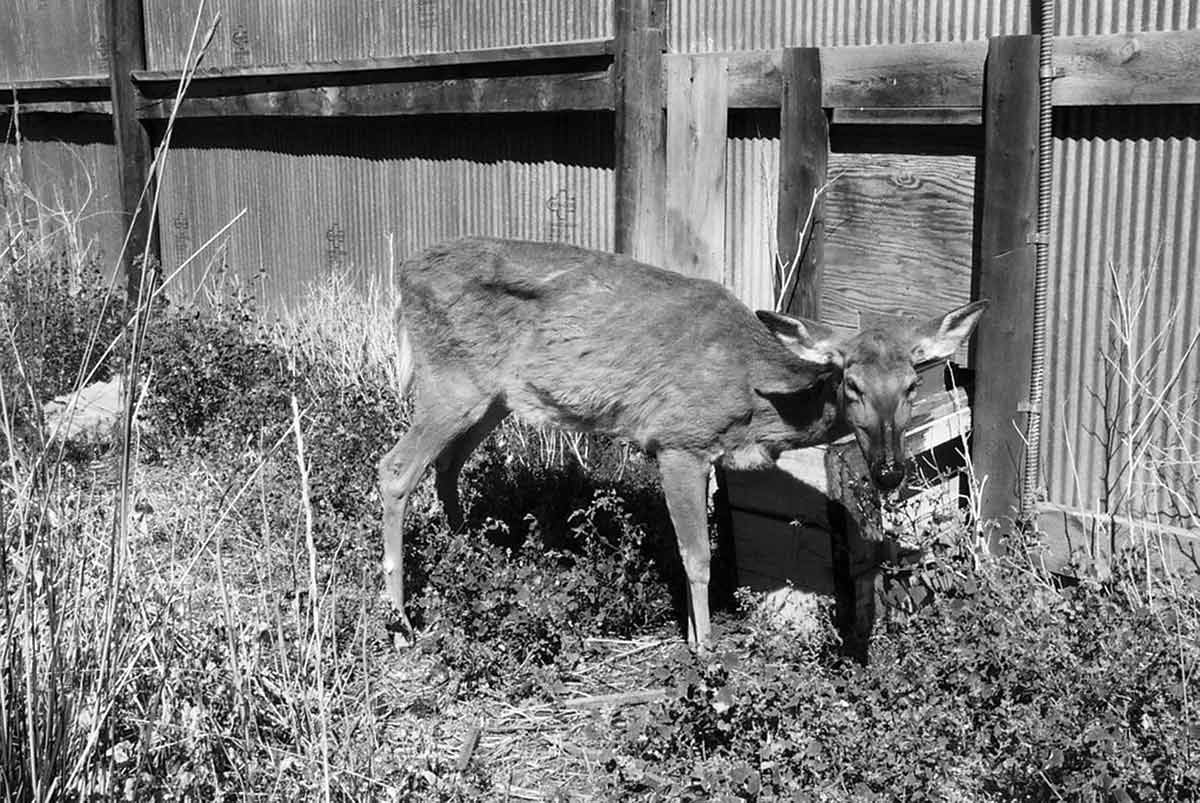
The story of chronic wasting disease begins nearly 60 years ago—but precisely why and how it began, no one can say.
The disease was first seen in the late 1960s in captive mule deer at a wildlife research facility run by the Colorado Division of Wildlife in Fort Collins, home of Colorado State University. These research facilities had obtained their captive deer from Colorado’s Western Slope, a landscape that the deer shared with grazing animals like sheep and cattle. “If you look back at history, there were thousands of sheep here,” wrote Terry Spraker, a longtime CSU pathology professor, in an unpublished report commissioned some 20 years ago by the Canadian government. Sheep were also housed at times in some of the deer research facilities where CWD was first discovered, according to Spraker. Sheep are significant because they have for centuries been the carriers of scrapie, a prion disease that’s similar to CWD in many ways.
One hypothesis about CWD’s emergence posits that deer contracted the disease via contact with scrapie-infected sheep. Early on, such a cross-species spillover incident was thought to have possibly occurred in the research deer pens at Fort Collins—but since then, “considerable evidence has surfaced to disprove that hypothesis,” Spraker noted. Other theories have posited that CWD started outside of the facility, when sheep interacted with deer somewhere in the wild Colorado landscape. Even in that scenario, however, the Fort Collins research facilities may have helped spread the emerging disease.
“The possibility must be considered that CWD was brought into the facilities from the wild by a single or a few infected individuals, which then transmitted the agent to other cervids under the close confines of captivity,” wrote Beth Williams, the late Colorado pathologist who first identified CWD as a transmissible spongiform encephalopathy (TSE), in a paper she coauthored in 1992. Williams’s report noted that “all documented cases in free-ranging cervids have occurred within approximately 50km of two affected wildlife facilities and most were within 5km.” It also suggested that “fence-line contact between captive and wild deer and elk is possible.”
Another hypothesis for CWD’s emergence is that it has a spontaneous origin. Other TSEs, like sporadic Creutzfeldt-Jakob disease in humans, appear to develop in some cases when prion proteins spontaneously misfold in a host’s body. A form of CWD recently found in moose in Scandinavia may have originated in this fashion.
Ultimately, the provenance of CWD remains an open question, but what can be said definitively about its early years is this: CWD was not initially recognized as a major crisis in the making. As Spraker noted in his report to the Canadian government, he and a colleague documented the first case of CWD in a free-ranging cervid—a young male elk in Rocky Mountain National Park—in 1981; the first case in a white-tailed deer in the wild was found in 1985 on the western edge of Loveland, Colorado, approximately 12 miles south of Fort Collins. These cases were like embers smoldering in a dry forest: small, quiet things that few people noticed.
“For the next 15 or so years, CWD seemed to be confined to northeastern Colorado and southeastern Wyoming,” Spraker wrote. “During this time there was little interest or concern from professional wildlife biologists, veterinarians or the public about the disease.”
That complacency didn’t last. CWD would not be confined for long to one little corner of the American West.
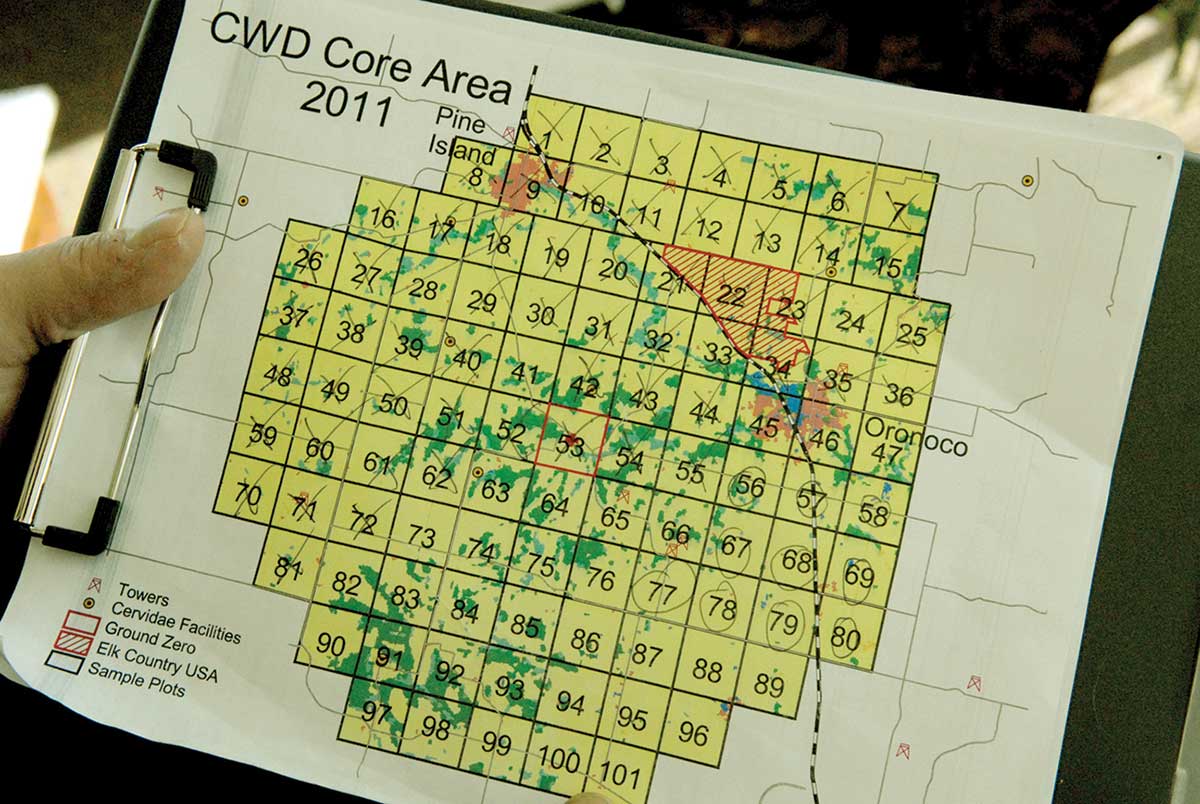
Last autumn, I sat down with Kerry Beheler at a spacious café in Mount Horeb, Wisconsin. Over fresh-baked cookies, the longtime wildlife health specialist with the state’s Department of Natural Resources (DNR) recalled the moment two decades earlier when the disease appeared. She and her colleagues were at the annual meeting of the Wisconsin Chapter of the Wildlife Society in the winter of 2002 when they got a call from their boss to come back to the office. “We were in the middle of a business meeting, and we said, ‘We can’t come right now,’” Beheler told me. “And management said, ‘Get back to the office right now.’”
That’s where Tom Hauge, then the director of the DNR’s wildlife management program, made the announcement: Chronic wasting disease had been found in a handful of white-tailed deer that Beheler herself had tested during the 2001 hunting season. The testing site “was literally two blocks from my house,” she recalled. She knew the hunters who had shot the deer. “It was very personal.”
“All of us were shocked—very shocked,” said Beheler, who has since retired from the agency. It was the first time CWD had showed up east of the Mississippi River, having previously been found in only a handful of Western states like Colorado and Wyoming and one Canadian province. “It scared the hell out of everybody.” No one knew how the disease had made its way to Wisconsin—even now, nobody knows. But it would radically alter the priorities of the DNR and its staff. Combatting CWD soon became a central mission. The agency leaped into action.
In those early years, DNR personnel deployed all kinds of interventions to try to stop CWD. They immediately launched a massive statewide testing effort to get a full picture of the infection’s presence. “We collected about 40,000 deer heads” to test for CWD, said Hauge, who’s also retired, “and I think it is still the largest deer-disease surveillance effort that has been undertaken” in the United States.
“It was all hands on deck,” Hauge added. “Water program staff, air program staff—I mean, everybody.” The DNR found some 200 positive deer over a wide area of southwestern Wisconsin. It was not good news: The disease was already pretty well established in the state.
The agency tried to knock back the deer population in the hope that it would help slow the spread. It employed sharpshooters to cull deer in infection areas, instituted an early hunting season, and used a management tool called “earn a buck,” in which hunters were required to kill a doe before they could shoot a prized buck for the season. The agency also banned baiting in CWD hot spots to prevent deer from congregating over food. But from the beginning, it was clear that the fight against CWD would be an uphill slog.
Chronic wasting disease is tenacious. When deer contract it, they are not symptomatic for many months. But they are infectious. They likely spread the disease directly, through body fluids and the like, or indirectly, by shedding it in soil, food, or water, transferring prions to members of their family and other companions over long durations before they finally succumb. Researchers have shown that infectious prions, which are resistant to many disinfectants, detergents, desiccation, extreme heat, and freezing, can linger in the environment for years.
The DNR’s early efforts to stamp out the disease also had to contend with the fact that deer breed like… deer.
Popular
“swipe left below to view more authors”Swipe →“One thing that was very sobering to me was the realization about the fecundity of our herd,” said Beheler. She described a pregnant 8-or-9-year-old doe that the agency shot in those early years. The doe had pneumonia and was infected with CWD, but she was still able to carry babies to term. “I was like, ‘We are not going to be able to stop this,’” Beheler said. Once CWD is established in a deer herd, it seems damn near impossible to get it out.
A fierce political backlash soon extinguished any lingering hope that CWD could be excised from the state. The DNR’s aggressive interventions against the disease were not popular with much of the hunting public—especially policies like the earn-a-buck program that placed limitations on hunting practices—and the agency attracted the ire of powerful state politicians. Under growing pressure, the DNR ended its sharpshooting program in 2008. In 2011, Governor Scott Walker—who ran as a friend of sportsmen and then spent much of his tenure cutting budgets and undermining morale at the DNR—signed a bill that barred the agency from implementing the earn-a-buck program. He and the Republican-dominated Legislature also relaxed the ban on deer baiting in CWD hot spots. Walker brought in a “deer trustee” to review the agency’s programs; among other things, the trustee’s 2012 final report recommended that Wisconsin “consider a more passive approach to CWD.” By 2014, the state had even done away with mandatory in-person deer registration, which required hunters to take their kills to DNR-run check stations so the agency could collect crucial data. In-person registration was what had allowed Beheler to detect those first infected deer back in 2001.
Wisconsin’s “passive approach” to the deadly disease persists to this day. The DNR now focuses mostly on research and surveillance of CWD, as well as outreach and education for hunters. The era of aggressive intervention is long over—and the results are disturbing.
“So, where things stand: They definitely continue to trend in the wrong direction,” said Jasmine Batten, a DNR wildlife health official who helps lead the state’s CWD response. There is widespread distribution of the disease in southwestern Wisconsin, where it was first discovered. In some counties, like Sauk and Richland, the prevalence of CWD among male deer is upwards of 60 percent, and among female deer it is upwards of 30 percent. “Maybe most disturbing: In recent years, we have areas of new detection in the northern part of our state,” Batten continued. The disease, which is currently found in deer within (or adjacent to) 64 of Wisconsin’s 72 counties, is out of control.
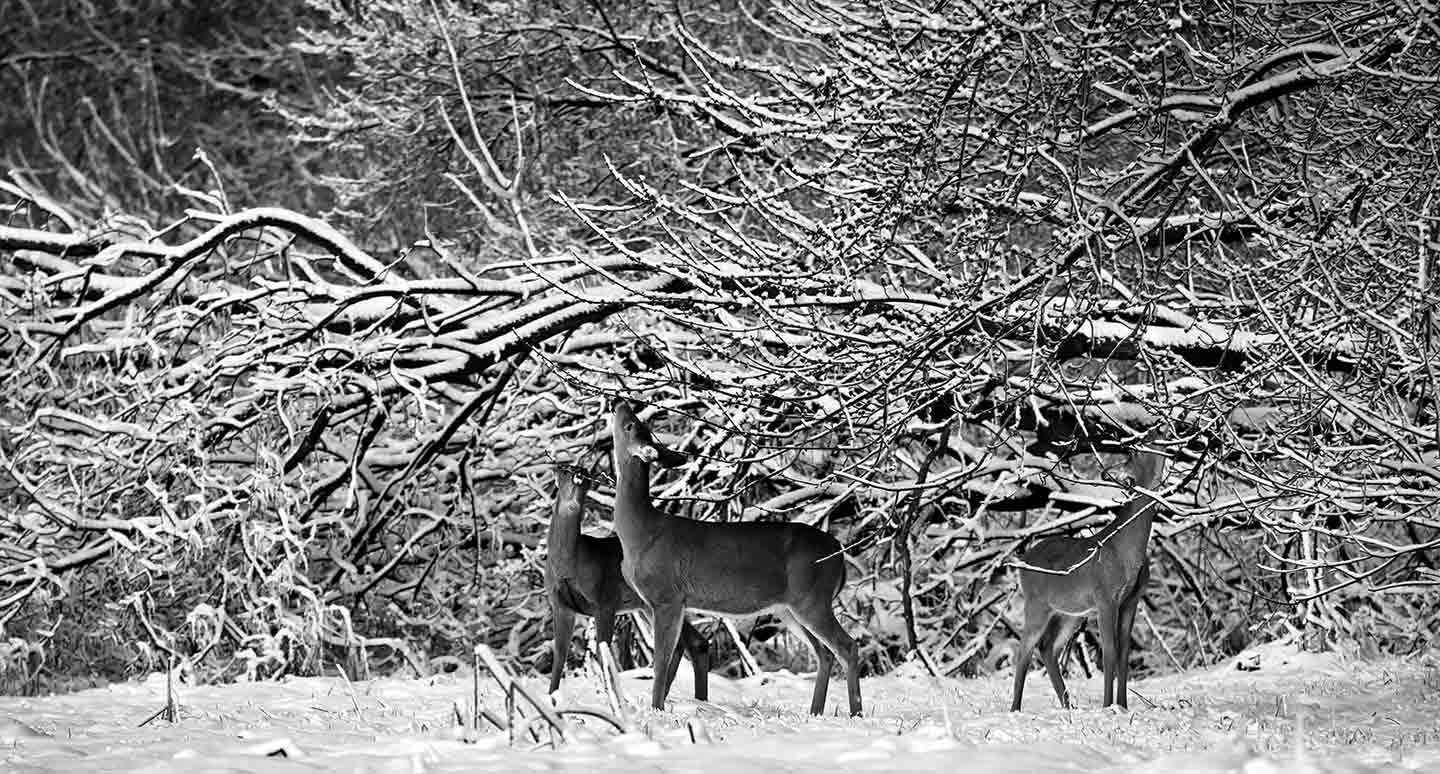
When it comes to CWD, Wisconsin is one of the hardest-hit states in the nation. It has been pummeled. Many other states are also struggling with the contagion—including Colorado and its neighbors, which are longtime hot spots—but there are a fortunate few that have managed to hold CWD at bay, chief among them New York.
In 2004, after CWD crossed the Mississippi River, New York began testing for the disease, focusing on captive deer farms that often seed CWD outbreaks. During that effort, officials identified infected deer that were connected to two farms in Oneida County. The state responded forcefully, depopulating the cervid farms where the outbreaks originated and drawing a 10-mile containment area around the farms, within which state sharpshooters killed as many animals as possible and tested them for CWD. Within the containment area, hunters were required to get their deer tested, the movement of deer products was strictly limited, and feeding deer was banned, among other measures. This effort went on for roughly five years and was a resounding success. The state has not had another CWD case since then, thanks in part to a prohibition on importing live deer from other states. The takeaway here seems to be that the best way to beat CWD is to prevent it from getting established in your state in the first place.
The intense mobilization against CWD in New York cost about $1 million. “It turned out to be a really, really good investment on our part,” said Kevin Hynes of the New York Department of Environmental Conservation. “I bet if you asked Wisconsin how much they would pay to have no CWD, I am sure it would be a lot more than a million dollars.”
Indeed. “CWD is winning in our state,” said Hauge, the former director of the DNR’s wildlife management program, during a road trip last fall around southern Wisconsin. “Without a significant change in Wisconsin’s response to the disease, there is nothing that is going to stop CWD from spreading to all 72 counties.”
Hauge, a tall, mostly bald man with a big white mustache, drove his silver Toyota into Baraboo, Wisconsin, and parked beneath a stand of pines. Nearby sat a large dumpster piled high with decaying deer carcasses—hunters leave the remains of processed deer here out of convenience, but also to keep potentially infected animals off the landscape. The stench was stomach-turning. Adjacent to the dumpster was a CWD testing station, which Hauge helps administer. He got out of the car and walked over to the station, then reached into a large wooden box and pulled out a deer head wrapped in plastic. The hunter who deposited it will soon find out whether his kill is suitable for consumption. That dead deer’s brain may well be filled with infectious prions.
“Fish and wildlife agencies across the country have classified CWD as the biggest threat to our nation’s deer herds and to deer-hunting traditions,” Hauge told me. He might have added that, since the DNR gets over 50 percent of its wildlife management budget from deer-hunting licenses and receives additional money from excise taxes on firearm and ammunition sales, the disease, if left to ravage deer populations, poses a danger to wildlife agencies themselves—agencies that are foundational to America’s conservation system.
“It is a huge problem,” Hauge said. “Huge.”
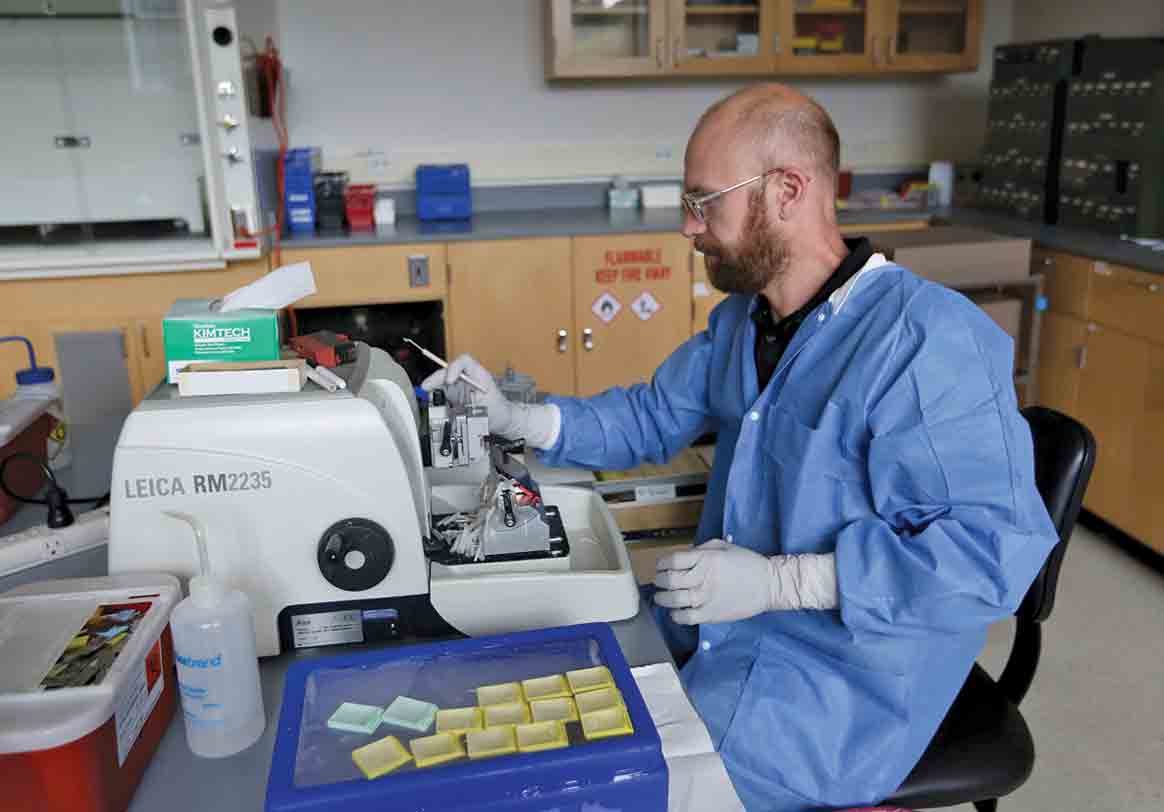
Ireceived an e-mail from Mike Foy in late November of last year, some eight days after he’d shot the buck on his farm in Iowa County. Subject line: “Chronic wasting disease test results for deer barcode 520868.”
The wait was over; the test results were in. “As feared,” he wrote, “my classic…3 year old buck came back positive.”
Foy had had his suspicions since the day he shot the deer—the animal, to his trained eye, had looked vaguely unwell, its antlers too small for its age—but the news was nonetheless disappointing. Another sick deer. Another in a long line of days spent hunting, shooting, killing, field-dressing, and transporting a deer, only for the test to come back positive.
“Four of the last five deer I’ve personally killed on our farm have been CWD positive,” Foy said in the e-mail. “Getting this last one out of the pond and through all the [vegetation] and up out of the valley in a wheelbarrow nearly killed me, even with…help,” he added. “As they say, I’m getting too old for this.”
For some readers, the killing of wild animals for food or sport might be objectionable, even immoral. But in Wisconsin, as in many parts of the country, hunting is a long-standing cultural tradition, an important economic engine, a significant source of nutrition, and a centerpiece of the conservation system. According to the US Fish and Wildlife Sevice, hunting-related expenditures in the state totaled $2.5 billion, and a large share of that economic activity is tied to the rifle season for deer, which runs for nine days in November. From gun and ammunition sales to hunting permits, to the jobs provided by meat-processing facilities, to the taxes generated by deer-hunting properties, to the income derived from hunting-related travel, lodging, and food purchases, the activity is a broad-based economic driver. And it’s all built on a white-tailed deer population that numbers about 1.6 million.
Hauge described deer hunting in Wisconsin as something akin to a civic religion. “I always say that besides green and gold, the next most common color in Lambeau stadium in November is blaze orange,” Hauge told me, referring to the official colors of the Green Bay Packers and the bright orange that hunters wear in the field. “I mean, at the high point, we had something on the order of 660,000 or 670,000 licensed gun deer hunters in Wisconsin. On top of that, another 200,000-some licensed bow hunters.
“In the northern part of the state—less so down south anymore—school districts would shut down for deer season,” he continued. “I mean, that is the kind of culture we had in our state.” A state program even allows hunters to donate their harvests to families in need, with some 94,000 deer donated over the past 20 years.
Chronic wasting disease presents a clear danger to this tradition. Though Wisconsin has yet to see sustained long-term declines in its deer population, no one knows for certain how CWD is affecting the herds. The DNR is in the midst of a sprawling research project to better understand this question, but the final report has yet to materialize.
Studies in other parts of the country, however, have come to some disturbing conclusions about what CWD can do to a deer herd. One 2008 study conducted on mule deer near Boulder, Colorado, found that the population declined by some 45 percent between 1987 and 2007. That drop coincided with the emergence of CWD in the area. Another study, from 2016, found that CWD led to increased mortality for white-tailed deer in southeastern Wyoming and was likely the cause of the significant population declines there.
The overall message from scientists, conservationists, and state officials about CWD’s impacts on deer is one of foreboding. “The continued spread of CWD across the landscape has raised concerns about long-term viability of affected wild cervid populations among wildlife managers and the citizens who hunt, photograph, and appreciate wild deer, elk, and moose,” according to the Association of Fish and Wildlife Agencies, which represents Wisconsin’s DNR and similar agencies on Capitol Hill.
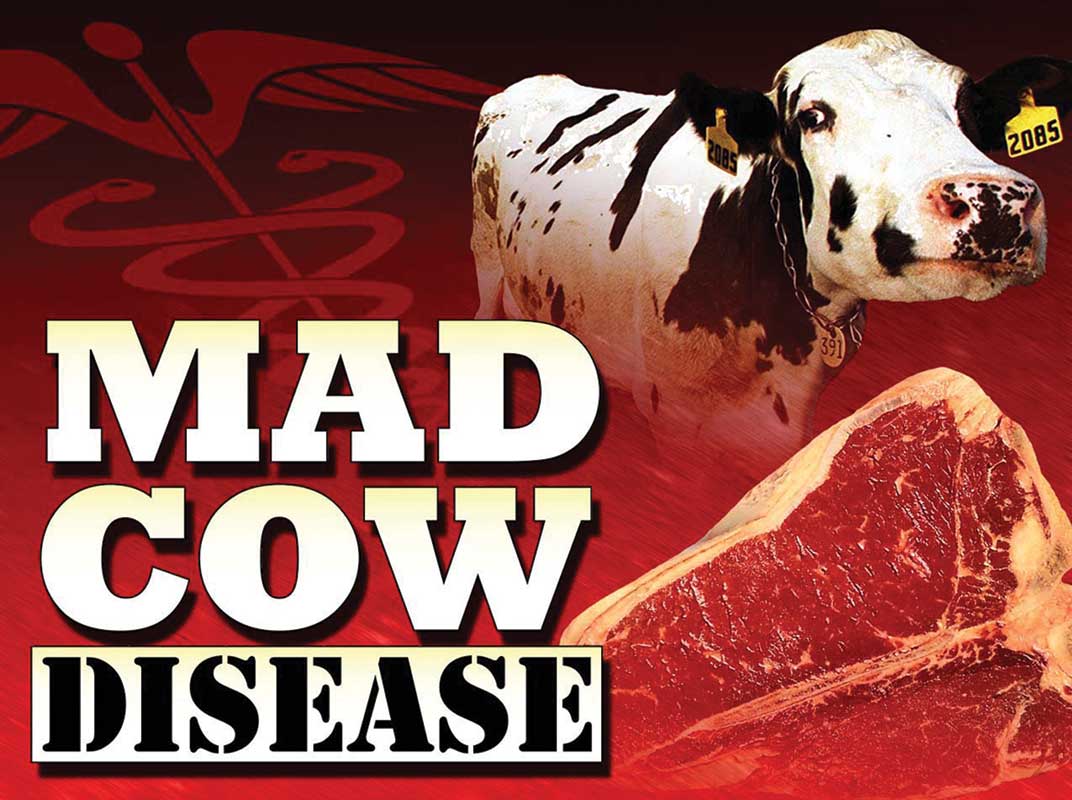
After my road trip with Tom Hauge, the hunt with Mike Foy, the café visit with Kerry Beheler, and the chat with Jasmine Batten at the DNR’s offices, I drove south out of Madison, Wisconsin, along solitary rural roads until I arrived at a secluded home set amid scattered forest and open prairie. Waiting inside for me were two men: Michael Samuel, a retired professor of wildlife ecology at the University of Wisconsin–Madison, and Bryan Richards, the emerging-disease coordinator at the US Geological Survey’s National Wildlife Health Center. We sat together near a large second-floor window, surrounded by taxidermied wildlife, looking out on a sweep of prairie in tawny autumn dormancy. Just as we were about to dive into our interview, a large buck marched across the lot.
“Oh, there you go! There is your mature buck right there,” Richards said.
“Look at him,” Samuel said, “he’s got his nose up.”
Both men are leading experts on CWD. Both have been on the front lines of the CWD outbreak in Wisconsin. Both are garrulous, with a lot to say on this subject, and after years of phone interviews, I wanted to sit down in person and hash things out with them. They did not disappoint.
As to the disease’s origins, “scrapie has to be the number one hypothesis,” Samuel said as we sat at the window together.
“The most parsimonious,” Richards agreed. “It was first described in that research facility,” he added of CWD, “but whether it arose in that facility, or whether they brought it in, will always be an open question.”
The two men touched on some of the other outstanding mysteries concerning CWD—among them, how misfolded prions manage to turn deer into figures from The Walking Dead—and then we turned to the question that inevitably comes up in any conversation about CWD: Can it infect people?
The scientific literature is frustratingly uncertain on that question, although the current consensus is that it’s highly unlikely. After all these years, there are no confirmed cases of CWD spilling into humans in the classic manner of a zoonotic disease. But “conflicting experimental data and observations preclude a clear answer on whether CWD prions are zoonotic at this point,” according to a group of scientists associated with Case Western University, the University of Chicago, and the US Department of Agriculture in a key 2021 paper.
To help try to bring some clarity to the subject, the scientists created an experiment to determine whether infectious CWD prions can cause healthy prion proteins in human brains to misfold, thereby converting them into agents of disease. To do this, they took CWD prions and effectively mixed them in vitro with human brain tissue from cadavers. Then they injected the resulting material into the brains of mice that had been genetically engineered to express healthy human prions. Those mice became sick with CWD. Under very specific laboratory conditions, then, the scientists showed that CWD prions can indeed cause healthy human prion proteins to misfold.
“It is a big deal, because all of the studies we have tried using CWD material straight from deer into humanized mice, we have not had success with those. So adding this extra in vitro step shows there is a way—when you put these things together, it is possible,” said Justin Greenlee, a prion disease scientist at the USDA’s National Animal Disease Center and one of the study’s authors.
The paper also notes, somewhat ominously, that the annual number of sporadic Creutzfeldt-Jakob disease cases in the US has risen in recent years, from 284 in 2003 to 511 in 2017, though enhanced surveillance for the disease and an aging population likely contributed to that observed increase. As a reminder, Creutzfeldt-Jakob is a prion disease found in humans, and any infection by CWD in humans would probably present as a case of CJD. “The possibility cannot be excluded that some of the increased [sporadic] CJD prevalence is linked to CWD exposure,” the scientists wrote.
Another paper, published in the journal Emerging Infectious Diseases in June, offered a bit of reassurance. Researchers exposed human cerebral organoids to CWD prions and found that the prions did not successfully propagate, prompting them to conclude: “Although we cannot rule out the possibility of CWD crossing into humans, our data suggest that a significant species barrier exists, even when human brain tissue is directly exposed to high-titer CWD brain homogenate for a prolonged period.”
Still, prominent scientists continue to warn that there is a nonzero chance that CWD could spill into the human population, with devastating results. And it’s worth reiterating that almost everyone I spoke with in Wisconsin said they would never knowingly eat venison from CWD-infected deer. Joe Abrams, a scientist with the Centers for Disease Control and Prevention, sums up his agency’s recommendations like this: If a CWD test comes back positive on a deer you harvested, “then definitely do not consume that venison…. We just don’t know at this point if CWD can be transmitted to humans.”
Richards and Samuel both agree.
“We don’t really fully understand what the risk to humans is,” Richards said. “But we are running one heck of an experiment, a long-term experiment.”
“And as CWD spreads,” Samuel added, “we just amp up the experiment.”
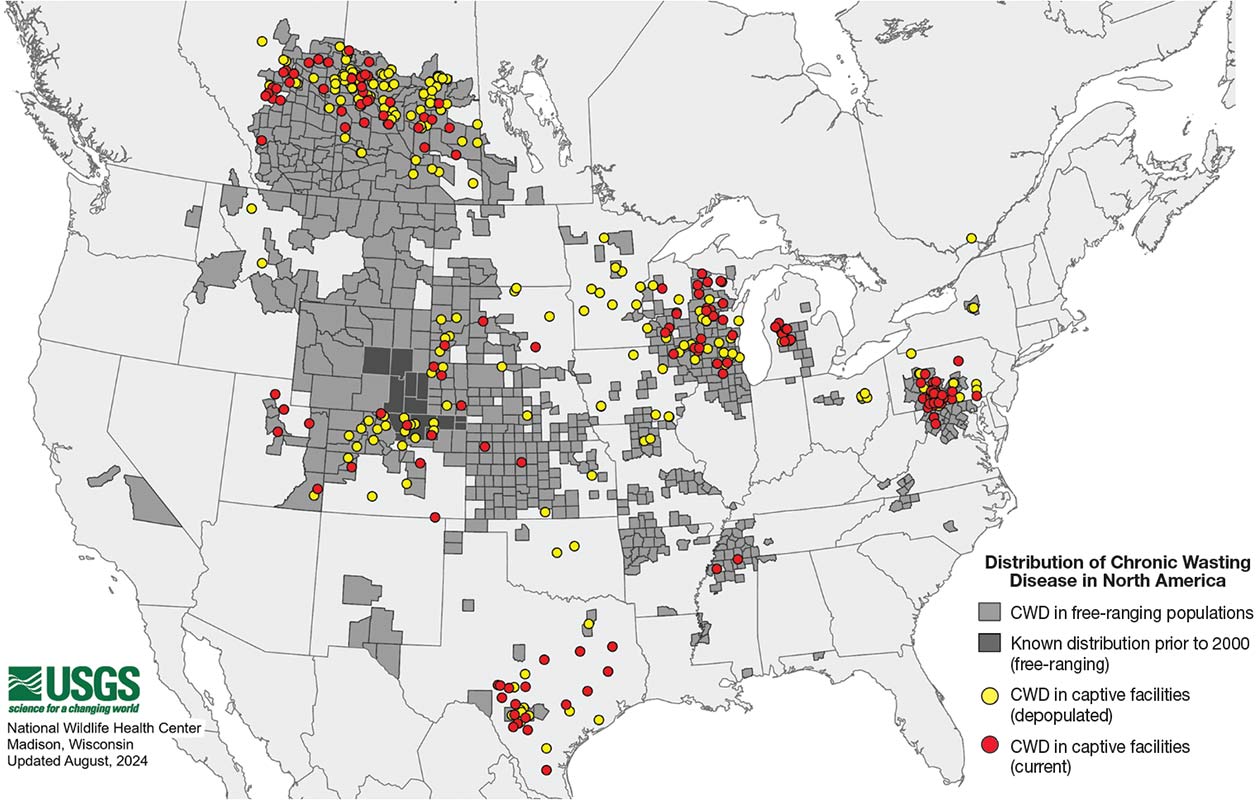
As things stand today, it is hard to see how Wisconsin gets out of this mess. Absent some breakthrough, like vaccine technology for prion diseases, the state seems fated to suffer persistent CWD outbreaks in deer for years to come, with all the attendant fear, uncertainty, and animal suffering.
Toward the end of our conversation, Samuel decried the lack of leadership from the state and especially from the hunting community, which has at times been hostile to vigorous CWD management. “I think we should stop spending money on it, because there is no will to manage it,” Samuel said. “There is no will on the part of the agencies responsible, and there is not much will, if any, on the part of…the hunters. Either we need a silver bullet like a vaccine, or we should spend our money on things that really need it, like species that are declining or going extinct and climate change issues. Because we are just throwing money down the drain as far as I am concerned.”
He and Richards both agree that an aggressive program to keep the disease out of new counties, and to reduce its prevalence in hot zones, would be worthwhile. But it is a moot point. Such a program would require a “monumental” effort, Richards said: You’d have to kill a lot of deer for a long time and might still fail to knock down the disease rate sufficiently. The state has shown no interest in pursuing such policies. “We are not willing to do it,” Richards said.
Mike Foy, meanwhile, would like to see the state offer financial incentives to hunters to kill deer in counties where CWD prevalence is high. If the state can spend hundreds of millions of dollars on baseball stadium renovations, as it recently did for the Milwaukee Brewers, then why not spend big money to protect hunting, another huge economic driver in Wisconsin? State officials have not been particularly receptive to his ideas either.
Wisconsin has buckled in the face of CWD. Sure, the state tests and monitors for the disease, but other action is sorely lacking. In fact, spend time with people concerned about CWD, and you’ll find that the state has become something of a byword, a warning: At least we’re not Wisconsin. No one wants to end up like Wisconsin. Poor Wisconsin.
It is a sad irony: One of the country’s preeminent deer-hunting states watches helplessly as deadly misfolded proteins tear through its herds. Wisconsin, the home of Aldo Leopold, the founding father of wildlife management, stands frozen in the face of this emergent animal disease like a buck in the high beams.
As for Foy, he never got another deer last winter. He hopes that this year will be different, but as a new season begins, the deer population in Iowa County remains suffused with sickness. Foy will get out there to do his part removing infected deer from the landscape, but it is an obligation tinged with worry. “Not to be able to get meat off of my own land that I consider safe to feed my family takes a lot of the satisfaction out of it,” he said. “It has even made me question,” he added, “whether I should keep the farm.”
***
Update: Since this article went to press, New York State officials announced that they had identified an isolated case of Chronic Wasting Disease in a captive deer in upstate New York. In a statement, the New York Department of Environmental Conservation said that there is currently “no evidence that CWD is present in wild deer” and that it had initiated enhanced surveillance for the disease.
Disobey authoritarians, support The Nation
Over the past year you’ve read Nation writers like Elie Mystal, Kaveh Akbar, John Nichols, Joan Walsh, Bryce Covert, Dave Zirin, Jeet Heer, Michael T. Klare, Katha Pollitt, Amy Littlefield, Gregg Gonsalves, and Sasha Abramsky take on the Trump family’s corruption, set the record straight about Robert F. Kennedy Jr.’s catastrophic Make America Healthy Again movement, survey the fallout and human cost of the DOGE wrecking ball, anticipate the Supreme Court’s dangerous antidemocratic rulings, and amplify successful tactics of resistance on the streets and in Congress.
We publish these stories because when members of our communities are being abducted, household debt is climbing, and AI data centers are causing water and electricity shortages, we have a duty as journalists to do all we can to inform the public.
In 2026, our aim is to do more than ever before—but we need your support to make that happen.
Through December 31, a generous donor will match all donations up to $75,000. That means that your contribution will be doubled, dollar for dollar. If we hit the full match, we’ll be starting 2026 with $150,000 to invest in the stories that impact real people’s lives—the kinds of stories that billionaire-owned, corporate-backed outlets aren’t covering.
With your support, our team will publish major stories that the president and his allies won’t want you to read. We’ll cover the emerging military-tech industrial complex and matters of war, peace, and surveillance, as well as the affordability crisis, hunger, housing, healthcare, the environment, attacks on reproductive rights, and much more. At the same time, we’ll imagine alternatives to Trumpian rule and uplift efforts to create a better world, here and now.
While your gift has twice the impact, I’m asking you to support The Nation with a donation today. You’ll empower the journalists, editors, and fact-checkers best equipped to hold this authoritarian administration to account.
I hope you won’t miss this moment—donate to The Nation today.
Onward,
Katrina vanden Heuvel
Editor and publisher, The Nation
More from The Nation

The Longest Journey Is Over The Longest Journey Is Over
With the death of Norman Podhoretz at 95, the transition from New York’s intellectual golden age to the age of grievance and provocation is complete.

Organized Labor at a Crossroads Organized Labor at a Crossroads
How can unions adapt to a new landscape of work?
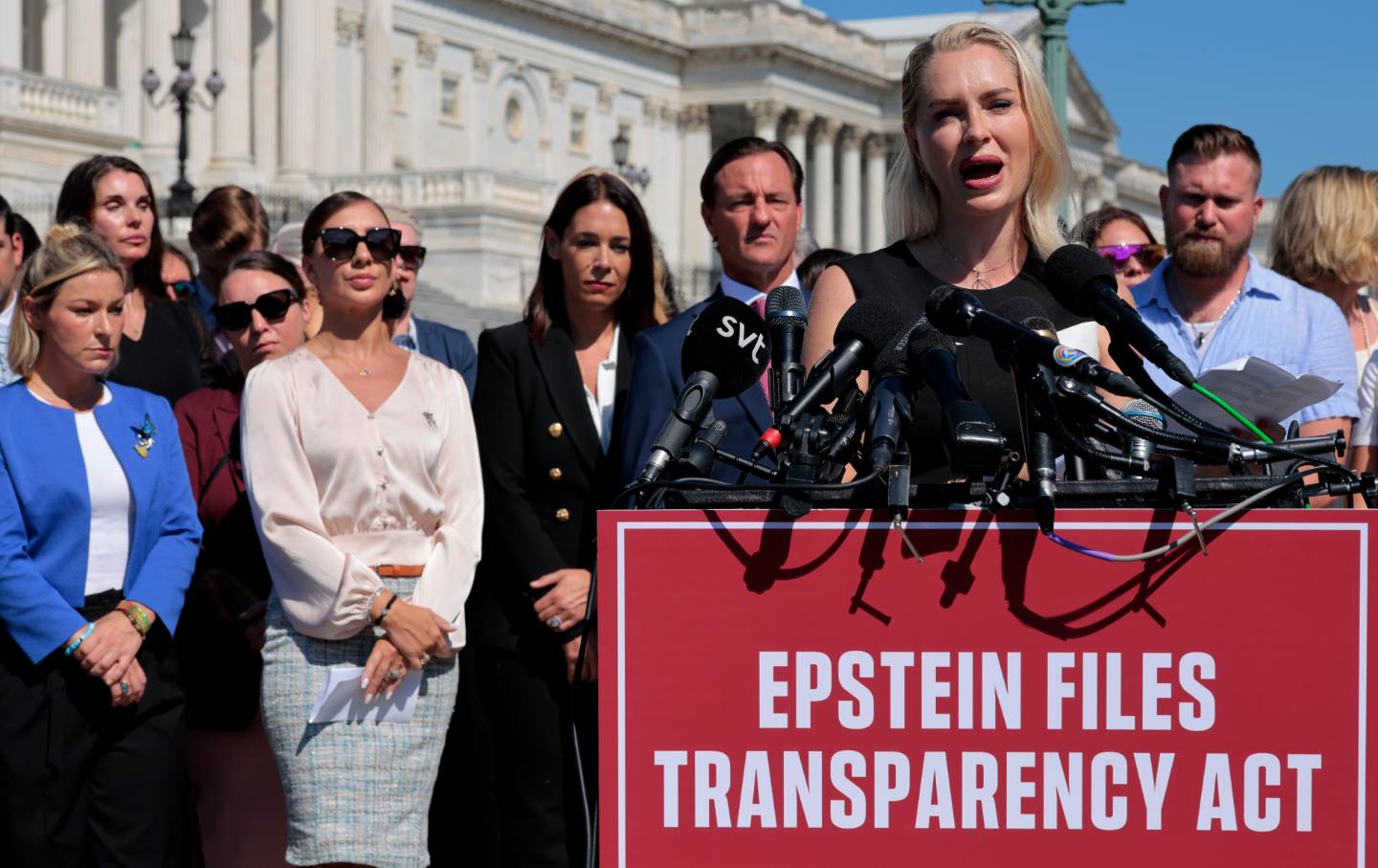
The Epstein Survivors Are Demanding Accountability Now The Epstein Survivors Are Demanding Accountability Now
The passage of the Epstein Files Transparency Act is a big step—but its champions are keeping the pressure on.
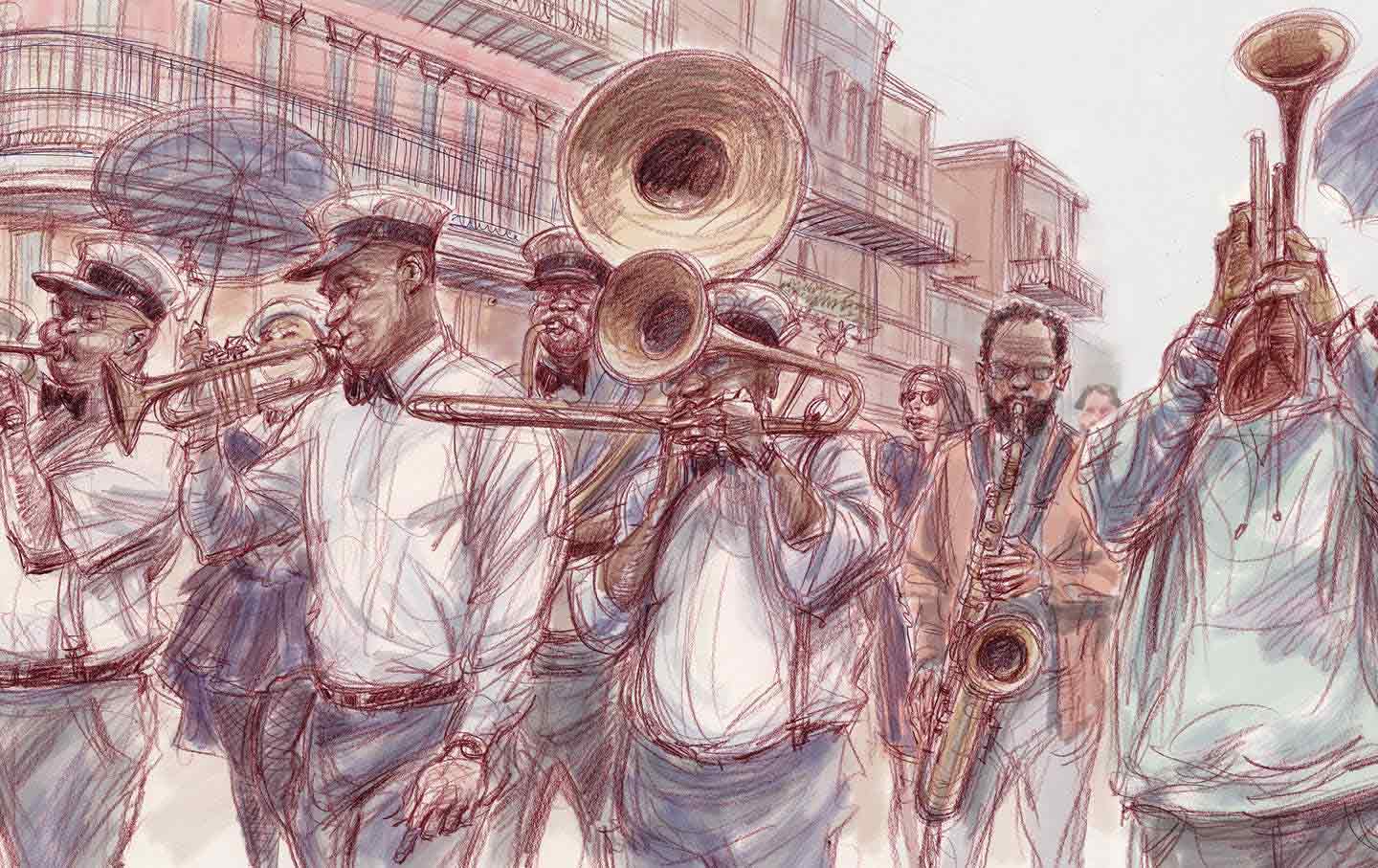
The Fight to Keep New Orleans From Becoming “Everywhere Else” The Fight to Keep New Orleans From Becoming “Everywhere Else”
Twenty years after Katrina, the cultural workers who kept New Orleans alive are demanding not to be pushed aside.

Breaking the LAPD’s Choke Hold Breaking the LAPD’s Choke Hold
How the late-20th-century battles over race and policing in Los Angeles foreshadowed the Trump era.

Mayor of LA to America: “Beware!” Mayor of LA to America: “Beware!”
Trump has made Los Angeles a testing ground for military intervention on our streets. Mayor Karen Bass says her city has become an example for how to fight back.


